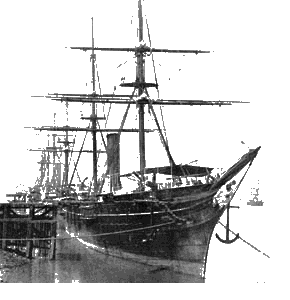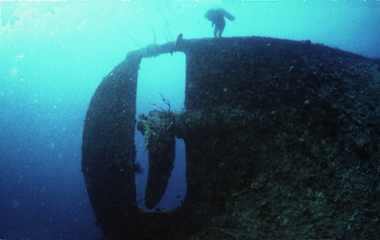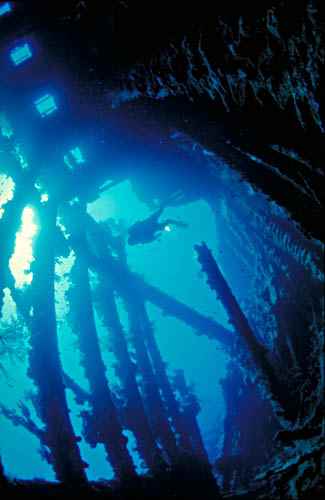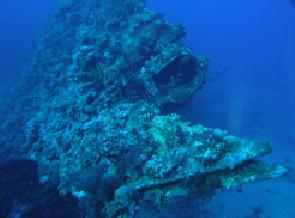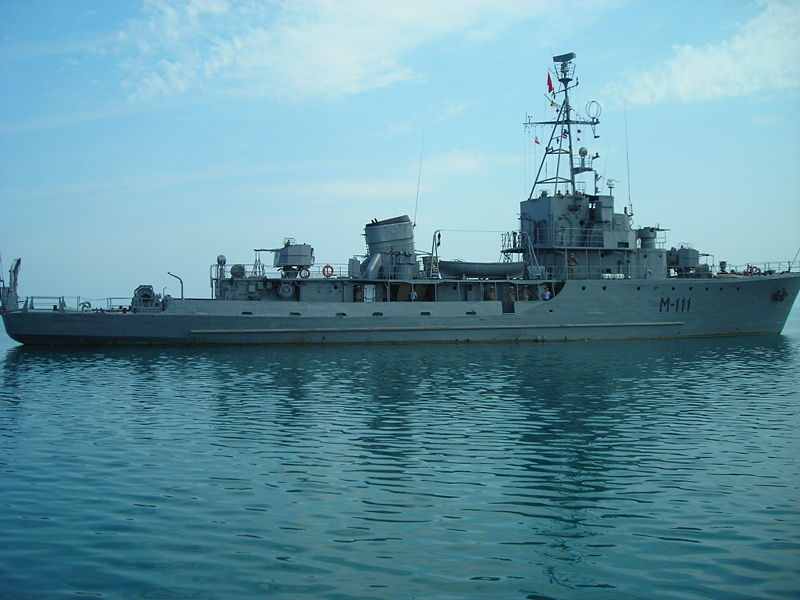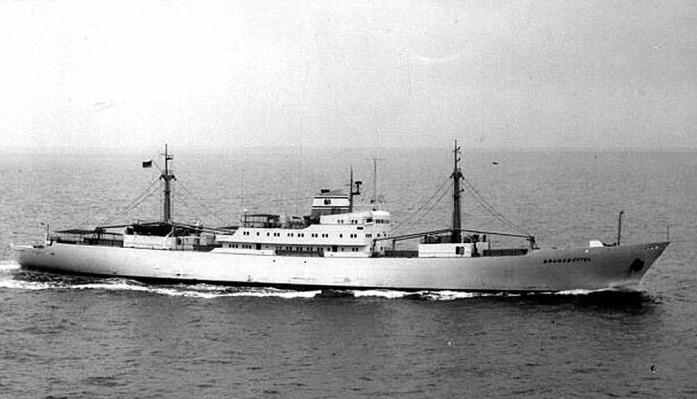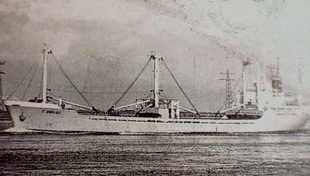The Carnatic was as a 1,776 GRT steam-powered wood-on-iron constructed Clipper Ship built at Samuda Brothers, Cubitt Town, Isle of Dogs, Poplar, UK for the Penninsula & Orient S.N. Co., London (later to be known at the P & O Line). When her keel was laid in early 1862, she was originally to be named Mysore. However, when she was launched 12 June 1862 she was renamed the Carnatic. Completed 25 April 1863, she was 89.4 meters in length, 11.6 meters in beam, and 7.8 meters in draught. The ship was outfitted with square-rigged sails typical of clipper ships of the era, and also had a 4-cylinder compound inverted steam engine from Humphry’s and Tennant, London, which provided 2,442 Hp to a single shaft and a 3-blade propeller.
On 27 June 1863 she sailed for Calcutta where she assigned service on the Suez-Bombay- and China route. The Suez canal would not be completed until September 1869, so at that time Suez was a seaport where ship’s cargoes and passengers were embarked or were delivered too.
In 1867, Captain Philip Buton Jones took command of the ship, and by all accounts was considered a “seaman of the ablest means”.
At 1000 on the morning of 12 September 1869, the Carnatic departed Suez for Bombay with 34 passengers, 176 crew, and a cargo consisting of copper sheeting, bales of cotton, Royal Mail, and 40,000 GBP in specie which was destined for the mint in India.
As the ship headed south, Captain Jones remained on the bridge to personally oversee the ship’s navigation through the narrow passages and hazards of the Gulf of Suez. Maintaining a speed of 11 knots, the ship continued south throughout the day, with day turning to clear evening when the Ashrafi Light was sighted at 2340. However, no bearing on the light was taken. As the watch team changed at midnight, the Ashrafi Light was well astern of the ship. At 0100 13 September, the Second Officer became aware that Shadwan Island lie dead ahead. Captain Jones ordered a new course which he believed would allow the ship to clear the Island. However, at 0118 waves were sighted off the starboard bow indicating a reef. The helm was put hard over to starboard and engines to full back, but to no avail…..
At dawn, Captain Jones realized that the ship was hard aground and ordered some of the cargo of cotton bales thrown overboard to lighten the ship in an attempt to refloat her on the changing tide. This, however, proved unsuccessful. Some passengers requested to disembark and make for Shadwan Island, a request which Capt. Jones refused as he was expecting the S.S. Sumatra to pass near the Carnatic’s position, inbound for Suez, in the near future. And although the ship was taking on water, the pumps were controlling the flooding, the ship had power and appeared to still be sound.
As the day wore on there was no sign of any passing ships, so Capt. Jones decided that all passengers and crew would spend another night onboard the ship, although some passengers again requested to disembark for Shadwan Island.
As the ship sat on the reef, it had been swinging from side-to-side with the waves, which unbeknownst to captain or crew, was slowly weakening the ship’s keel. At 0200 on 14 September the water level in the engineroom reached the ship’s boilers which resulted in the ship losing all power (and loss of the pumps as well!).
At daybreak, with the ship flooding uncontrollably, Capt. Jones gave the order to abandon ship with women and children being ordered the first to depart the ship. The first of the women and children had just been put into a lifeboat when the ship suddenly broke in half. The after section of the ship immediately went to the bottom resulting in the loss of 5 of the passengers and 26 crew. The forward section of the ship rolled over onto its port side taking the remainder of the passengers and crew with it.
The passengers and crew in the water struggled for their lives and many managed to make it to the top of the reef.
The survivors managed to make it to Shadwan Island in the remaining lifeboats, arriving on the island at sunset. A signal fire was started atop the island which was later sighted by the passing S.S. Sumatra who rescued the survivors. 31 people lost their lives in the sinking of the ship.
Captain Jones was ordered to England to stand before a formal Board of Enquiry where it was determined that the grounding of the Carnatic was the result of negligence on the captain’s part. Captain Jones’ Master ticket was suspended for nine months. However, Captain Jones never went to sea again…..
The Carnatic’s cargo was salvaged in the weeks following the sinking where 40,000 GBP of cargo and specie were recovered.
Diving Information
The Carnatic lies at the base, and parallel to, the Sha’ab Abu Nuhas reef at a depth of 18-27 meters. When the ship sank, she had broken into two sections. When the ship settled on the bottom, the two halves settled nearly back together! The wreck is lying on its port side with the bow of the ship is pointing to the east and stern pointing to the west. The fore and aft sections are nearly complete, separated by the section of the ship where it broke in two. The wooden deck and hull have long since deteriorated and disappeared, leaving only the iron structural ribs and frames. This makes for an easy penetration into the ship down to what was the second deck. At the bow one can see where the bowsprit and figurehead were once mounted. At the stern, window ports still remain and one can penetrate the ship down two deck levels. Beneath the stern lies the rudder and the three-bladed propeller which make for some beautiful pictures! The entire wreck is populated with soft corals, glass fish, crocodile fish, lion fish, and the occasional blue-spotted stingray. Diving the wreck can pretty much only be done in good weather and by being dropped off by Zodiac. A very nice dive adventure!



